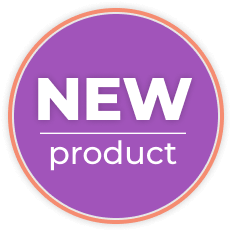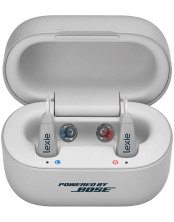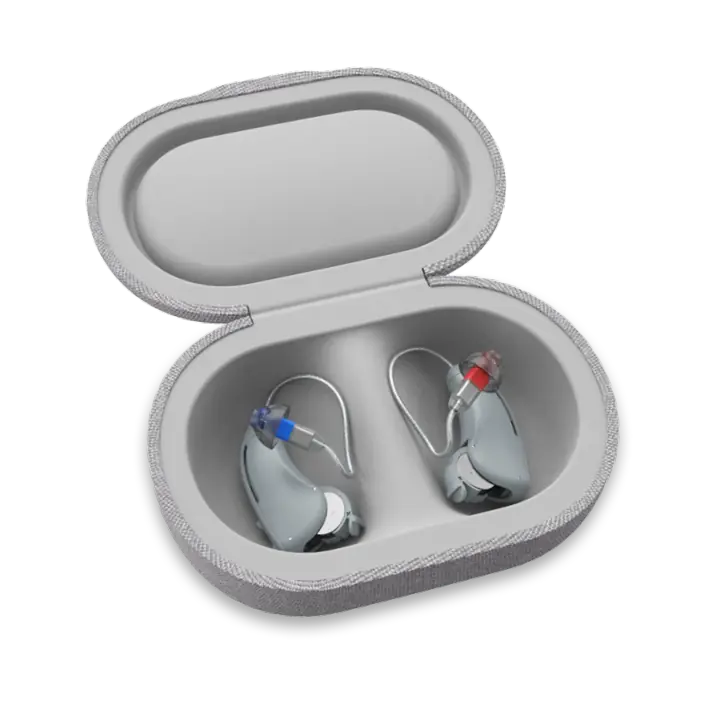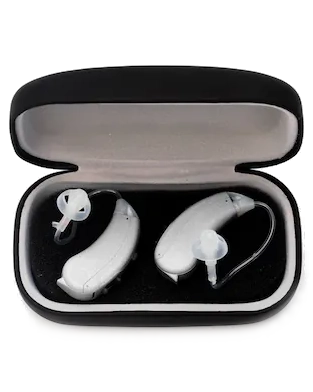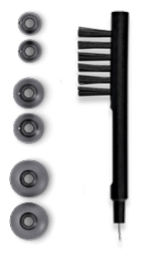The Guide on Direct-to-Consumer (DTC) Hearing Aids
Published: June 17, 2022
Updated: July 22, 2022
Hearing aids have undergone major changes in recent years—and so has the way people obtain them. In the past, those in need of treatment for hearing loss would visit an audiologist or other hearing professional to purchase hearing aids. These devices typically cost upwards of $3,000, not including any medical bills from a clinic visit.
However, those with hearing loss now have more options than ever. Direct-to-consumer (DTC) hearing aids have changed what is possible for hearing loss treatment, making hearing aids more accessible and affordable than ever.
What is a Direct-to-Consumer Hearing Aid?
First and foremost, it’s important to understand what a direct-to-consumer hearing aid is, and how it differs from other options available.
A direct-to-consumer hearing aid is a hearing aid that is purchased directly from the manufacturer—typically online—without the need for a prescription from a hearing healthcare professional. Recent advancements in technology have made DTC hearing aids much more sophisticated and competitive with traditional hearing aids.
Despite similar technology between the devices, DTC hearing aids are typically available at far lower prices than traditional hearing aid options, making them an appealing option.
The Direct-to-Consumer Distinction
When searching for a hearing aid online, a few different labels might appear, including over-the-counter hearing aids. Direct-to-consumer hearing aids are not the same thing as over-the-counter hearing aids. These devices will be available for purchase in physical retailers, making it possible to purchase hearing aids at stores such as Walgreens—however, they aren’t available quite yet.
That being said, you may see personal sound amplification products (PSAPs) on store shelves. These devices are not hearing aids—the FDA strictly prohibits them from being labeled as such. They aren’t medical devices and aren’t designed to treat hearing loss.
Benefits of Direct-to-Consumer Hearing Aids
Direct-to-consumer hearing aids have many benefits that can help those with hearing loss get the treatment they need.
Lower costs
As mentioned, most DTC hearing aids are sold at much lower price points than traditional hearing aids. The average cost of traditional hearing aids is about $32,0500. This can present challenges in getting the treatment needed, and some may opt to forgo the high costs and try to live with their hearing loss.
DTC hearing aids help to bridge the gap by substantially lowering the cost. Not only are the hearing aids more affordable, but there is also no cost for a trip to the clinic either.
Convenience
One other major hurdle in getting hearing aids is accessibility. DTC hearing aids eliminate the need to schedule and travel to a clinic visit. They can be purchased directly online, shipped straight to one’s home, and used right out of the box without the need for a professional fitting.
Many options
The DTC hearing aid space has gotten a bit crowded in recent years. This means there are plenty of options to choose from. Each brand or type of DTC hearing aid will have its own price, features, and level of support, which allows users to take control of the process and purchase the hearing aid that fits their needs.
The increased availability of online resources has made it easier for consumers to find and compare different models. Check out Lexie’s guide for choosing the best online hearing aid.
Who are Direct-to-Consumer Hearing Aids Best For?
Getting treatment for hearing loss is critical for mental and emotional health. Hearing aids can allow users to maintain a high quality of life and reduce the risk of depression or feelings of isolation due to difficulty maintaining social relationships.
DTC hearing aids are a great treatment option for those with mild-to-moderate hearing loss. These devices remove barriers commonly associated with hearing loss treatment, allowing individuals to take control of their hearing.
For those with severe hearing loss, the traditional hearing aid path is still the route to go.
Tips for Getting Started with Direct-to-Consumer Hearing Aids
For those interested in DTC hearing aids, there are a few things to take into consideration before getting started.
Take a Hearing Test
Taking a hearing test is an important step in assessing your level of hearing loss. These tests can help uncover whether a DTC hearing aid is the right choice, or if a traditional hearing aid is needed.
While you can visit an audiologist to get your hearing test, some DTC hearing aid providers have also included online hearing tests that allow you to test your hearing right from home. For example, Lexie offers a free online hearing test that provides results in just minutes.
Find a Risk-Free Trial Option
While DTC hearing aids are more affordable than traditional options, they are still a sizable investment worth protecting. It’s important to find a hearing aid that comes with a risk-free trial period to ensure that the device you choose is best for you—and if it’s not, that you can try again without losing your investment.
Don’t underestimate customer support
In addition to a risk-free option, make sure whichever DTC hearing aid you choose also comes with comprehensive support. Some brands offer free consultations with hearing experts that can make it easy to have questions answered or when a problem arises. Lexie offers support right through the Lexie app, making it easy to get assistance when needed.
Once you’ve considered these core elements, you can dive into individual features and cost to determine the best DTC hearing aid for your situation.
Lexie’s Direct-to-Consumer Hearing Aid
It’s important to do thorough research when choosing a DTC hearing aid. One option to consider is Lexie hearing aids. Lexie offers important elements such as a 45-day, risk-free trial period and access to Lexie Experts for support to ensure the best possible experience. The hearing aids also features cutting-edge hearing technology including noise reduction and directional microphones.
The Lexie hearing aids pair with the Lexie app to create a seamless user experience. The app allows users to change volume levels, select hearing environment settings, and connect with Lexie Experts that can assist with troubleshooting or remote tuning of their device.
Get started today by shopping online or contacting a Lexie Expert for more information.
